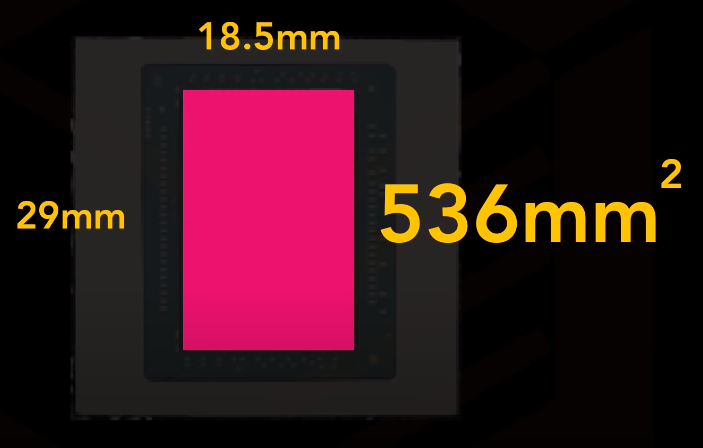Install the app
How to install the app on iOS
Follow along with the video below to see how to install our site as a web app on your home screen.
Note: This feature may not be available in some browsers.
You are using an out of date browser. It may not display this or other websites correctly.
You should upgrade or use an alternative browser.
You should upgrade or use an alternative browser.
AMD: Navi Speculation, Rumours and Discussion [2019-2020]
- Thread starter Kaotik
- Start date
- Status
- Not open for further replies.
DegustatoR
Legend
Because they can't just stop selling GPUs at $200-400 range.Can someone explain to me why is AMD even wasting precious 7nm wafers on previous gen?!
The 5700 being made from a cut down Navi10 die, does this indirectly indicate that perhaps yields are so good they arnt concerned about defective dies, or is it more likely they have a stockpile of full Navi10 dies that will be used for the next few months?
Probably means there's already enough inventory in the channel. It's not like Navi is a hot seller.
DegustatoR
Legend
5600XT is made from a cut down Navi 10 die too and should arguably be a much better seller than 5700XT.The 5700 being made from a cut down Navi10 die, does this indirectly indicate that perhaps yields are so good they arnt concerned about defective dies, or is it more likely they have a stockpile of full Navi10 dies that will be used for the next few months?
They will probably drop 5700XT down in price after Navi 21 launch which won't leave any room for 5700 in between.
Makes much more sense.5700 vanilla only, per edit.
arandomguy
Veteran
Can someone explain to me why is AMD even wasting precious 7nm wafers on previous gen?!
Even with no retail DIY sales you'd still need to consider the OEM supply chain and the pro line supply chain which use Navi 10 dies.
Do you mean that one who stated that "Big Navi is not so big" (he said below 500mm² ) and now he came with this?Techtuber that shall not be named says 29x18.5mm for N21. Take it with traversal co-processor amount of salt.

D
Deleted member 13524
Guest
Because then they'd need a gigantic bandwidth to feed those, and/or 160CUs would generate a tremendous amount of heat on 7nm?Navi 10 with 160 CUs would be about that size (10240 ALU lanes), with 4 shader engines using up about 389mm². So one could ask, why did AMD not go with 160 CUs?
Say no more fam.New I. Like. Big. Dies andicannnot lie. *SCNR*

One might say the logic behind die size doesn't really matter. Fiji vs Vega 10 - the same core config besides memory - die size 596mm2 vs 495mm2 (120%) - process 28nm vs 14nm.
We are just trying to make sense of why it's so much bigger than XSX. There are only three options. Massive cache is real, die size is wrong, it's more than 80CUs.
Anything is possible, but 120 is a huge number.I'm starting to suspect that AMD pulled off another RV770 feat, and that there are >80 CUs. Maybe something like 120? Sort of like how RV770 had 800 SPs instead of anticipated 640.
Jawed
Legend
Or lowered latency and better cache-hit rate of memory operations. Every cache miss wastes bandwidth compared with what would have happened with a larger cache.Because then they'd need a gigantic bandwidth to feed those,
More heat than GA102? 536 versus 628mm²and/or 160CUs would generate a tremendous amount of heat on 7nm?
Less ALU lanes than 3090?
Real world GPU clock of, say, 2100MHz versus 1950MHz?
I think we will se a dual PS5 GPU:
Maybe Xbox and PS5 are more different in CU than we thougt? I think for PS5 a lots of Transistors are going into Cache and to reache 2.23 GHz, the same like RDNA 2
Also we will see paradigm shift. If Mike Cernys words are true we will see more small polygons which make the layout for less/slow Rasterizer with much CU lead to an inbalance in the workload.
Maybe Xbox and PS5 are more different in CU than we thougt? I think for PS5 a lots of Transistors are going into Cache and to reache 2.23 GHz, the same like RDNA 2
Also we will see paradigm shift. If Mike Cernys words are true we will see more small polygons which make the layout for less/slow Rasterizer with much CU lead to an inbalance in the workload.
For mid gen refresh? Or do you mean the base console?I think we will se a dual PS5 GPU:
- Status
- Not open for further replies.
